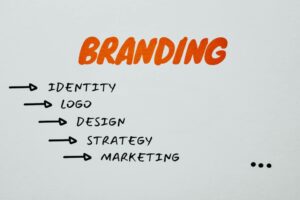Table of Contents:
- The Branding Process: From Concept to Narrative
- The Research and Discovery Phase
- Cultivating Creativity: Developing a Brand Identity
- Crafting the Market-Ready Narrative
- Storytelling in Modern Branding
- Consistency and Integration Across Channels
- The Role of Digital Platforms and Innovation
- Brand Evolution: Sustaining Long-Term Relevance
Every successful brand begins as a spark—an idea looking to make its mark on the world. But what separates the brands everyone remembers from those that fade away is the ability to turn those sparks into persuasive narratives that capture attention, inspire trust, and drive growth. Expert branding professionals who blend creativity with business acumen are at the heart of this process. Their work is both an art and a science, producing messaging and visuals that form the backbone of a brand’s identity. Observing the strategies implemented by top global branding agencies provides a window into how leading experts craft stories that consistently stand out in today’s crowded marketplace.
The journey from idea to successful market narrative is complex. It demands original thinking, a keen awareness of market trends, and a relentless focus on the target audience’s needs and desires. Whether launching a new business or rejuvenating an established one, the methods developed by top branding professionals remain both timeless and highly adaptable. This article walks through their core principles and strategic approaches to shaping ideas into market-ready brands that people not only notice but remember and recommend.
The Branding Process: From Concept to Narrative
Branding is not a one-size-fits-all discipline. It’s a strategic process with clearly defined steps, each tailored to draw out the full potential of an idea. Professionals in this arena begin with the kernel of an idea, nurturing and shaping it through research, creative sessions, and structured methodologies. Moving from the raw concept stage to a fully formed narrative involves understanding the brand’s unique purpose—its reason for existing—along with the values and differentiators that make it distinct.
Branding professionals strive to balance creativity with practical business considerations throughout this journey. They ensure the brand narrative supports organizational goals, aligns with stakeholder aspirations, and anticipates challenges that may arise in the marketplace. This holistic process sets the foundation for future storytelling, marketing, and customer engagement efforts, making the brand’s essence clear to everyone it touches.
The Research and Discovery Phase
Before pen ever meets paper—or pixels meet screen—the discovery phase begins. Top branding professionals use internal and external research methods at this early stage to uncover vital context. Competitive analysis, industry benchmarks, and consumer interviews help clarify where the new brand will fit within the larger landscape. According to an insightful article by the Forbes Business Council, thorough research is the cornerstone of any successful branding initiative.
This phase is about listening as much as analyzing, considering not just what competitors are saying but also what is left unsaid in the market. It’s also about learning from the company’s internal workings, such as its history, team vision, customer feedback, and technical strengths. All of this information is distilled into actionable insights, ensuring that the subsequent creative work is firmly rooted in facts, not assumptions.
High-performing branding teams know that skipping or rushing this phase leads to lackluster results. Instead, they use interviews, focus groups, surveys, and market data to build personas that represent their ideal customers. This depth of understanding is critical for developing a message and visual language that feels relevant and authentic.
Cultivating Creativity: Developing a Brand Identity
Armed with market knowledge, branding professionals begin shaping the brand’s core identity. This creative process isn’t about simply designing a logo or picking colors—it’s about translating the brand’s essence into a recognizable, compelling language that can be used everywhere a customer interacts with the business. Visual identity elements like logos, color schemes, typography, and imagery create instant recognition. But the true magic lies in weaving these visuals with a distinctive voice, tone, and personality.
Effective branding teams encourage brainstorming sessions, visualize diverse concepts, and iterate quickly. They’ll draw inspiration from various sources—including art, culture, history, and user behavior—to ensure the brand doesn’t just fit the market but rises above it. The result is a visual and verbal asset toolkit that anchors all communications, from advertising to packaging, creating a lasting emotional impact.
Brand professionals also pay attention to accessibility and inclusivity in design, ensuring their identity resonates with wider audiences. This commitment to creative excellence positions brands for recognition, recall, and advocacy across all touchpoints.
Crafting the Market-Ready Narrative
With the brand’s foundation, professionals craft a narrative communicating value and relevance. The story they build must connect with the audience, explain why the brand exists, and inspire action, whether purchasing, sharing an experience, or embracing a movement. As the Harvard Business Review highlights, a clear, consistent, and differentiated narrative helps brands anchor themselves in consumers’ lives and memories.
Crafting a compelling narrative involves more than just clever copywriting. It integrates research findings, brand personality, and market positioning into every message. The best stories tap into universal themes like aspiration, overcoming challenges, or belonging. Each piece of content—whether a website headline, product description, or social media post—works in concert to reinforce the core story, building a relationship layer by layer.
Market-ready narratives also account for shifting trends and cultural moments, adapting while remaining true to the brand’s purpose. This ongoing balancing act is how top branding professionals build loyalty, keep messaging fresh, and ensure brands remain top of mind.
Storytelling in Modern Branding
Storytelling is at the heart of branding, transforming static information into engaging journeys that resonate far beyond a product’s technical features. Market leaders tell stories that reflect their origins, celebrate customer successes, and connect their mission to something bigger than a transaction. Top branding professionals know that stories stick in the mind while facts are often forgotten.
In today’s environment, stories are told across media—video, social posts, podcasts, and immersive online experiences—so the narrative must be adaptable yet unified. A compelling story unfolds over time, building anticipation and a sense of involvement with every interaction. It’s also deeply authentic; audiences can quickly spot stories that feel forced or inauthentic. Brands that succeed are willing to be vulnerable, showcase real people and real results, and champion causes that matter to their communities.
Modern brands understand that emotional engagement drives growth and retention. A relatable story motivates customers to become advocates, organically extending the brand’s reach through word of mouth and social sharing.
Consistency and Integration Across Channels
Once a narrative is established, maintaining consistency across all channels is crucial for credibility. Branding professionals implement guidelines covering visual identity, messaging tone, and storytelling themes so every touchpoint feels part of a unified whole. According to research, this integration builds familiarity, which helps audiences recognize and trust a brand more quickly.
Consistency isn’t about repeating the same message verbatim; it’s about ensuring they encounter a dependable and recognizable presence no matter where they engage—in-store, online, or across global markets. Top brands create integrated marketing campaigns, synchronize product packaging with digital assets, and train staff to embody the brand voice in every customer interaction.
The best branding professionals regularly audit channels for alignment, using internal checklists and customer feedback to catch gaps early. This seamless integration fosters trust, turning casual buyers into loyal repeat customers and enthusiastic brand cheerleaders.
The Role of Digital Platforms and Innovation
Digital innovation has expanded the canvas for brand storytelling. The sheer variety of channels—from traditional websites and email to social networks, apps, and digital events—requires that narratives be flexible and dynamic. Top branding professionals leverage analytics, A/B testing, and user insights to optimize their stories for each space. A message that works on Instagram may need to be adapted for LinkedIn or an interactive app. The proliferation of data also means branding teams can personalize messages, tailoring content to match individual preferences and behavior.
Innovative brands, whether AR filters, live-streamed events, or interactive infographics, don’t shy away from new formats. They also encourage real-time engagement, responding directly to customers and fostering communities that support and amplify the brand’s story independently. Digital platforms allow for faster feedback loops, which professionals use to adjust narratives, refine strategy, and celebrate shared wins. This approach ensures the brand remains responsive, modern, and in tune with evolving audience expectations.
Collaboration across creative, marketing, product, and technology teams is essential. By bringing together diverse talents, brands can innovate more rapidly, stay ahead of industry shifts, and create cohesive experiences across every touchpoint.
Brand Evolution: Sustaining Long-Term Relevance
Branding isn’t a static achievement but an ongoing journey. As markets shift and consumer values evolve, the most successful brands are those willing to listen, learn, and adapt their narratives over time. Top branding professionals build brands with enough flexibility to refresh messaging, update visual elements, and reposition offerings without losing core identity.
Ongoing evolution involves regular assessment, monitoring analytics, conducting brand health surveys, and studying cultural trends. Small, consistent updates often prevent the need for costly overhauls down the road. This responsiveness enables brands to remain relevant for decades, evolving alongside their customers while staying true to foundational principles.
In the end, transforming ideas into market-ready narratives is a collective achievement. It requires strategic thinking, creativity, research, relentless attention to detail, and big-picture shifts. By studying the practices of top global branding agencies and drawing on insights from sources, organizations of any size can move from fragmented ideas to powerful market-ready narratives that drive real business results and enduring audience connections.








